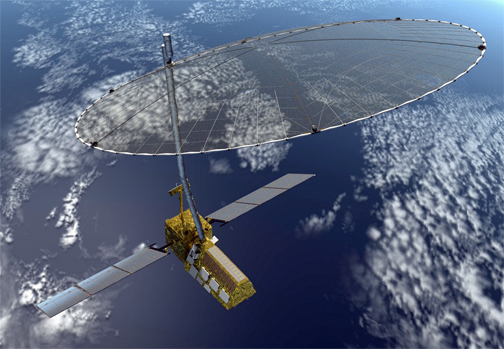Airbus Defence and Space will supply their latest generation Solid State Recorder for the NASA-ISRO Synthetic Aperture Radar (NISAR) mission, slated for launch in 2020.
The contract was recently signed between Airbus Defence and Space and NASA’s Jet Propulsion Laboratory. Airbus Defence and Space, the world’s second largest space company, will supply its latest generation Solid State Recorder for the NASA-ISRO Synthetic Aperture Radar (NISAR) mission, slated for launch in 2020. The contract was recently signed between Airbus Defence and Space and NASA’s Jet Propulsion Laboratory, CA, USA.
The flash memory Solid-State Recorder (SSR) products of Airbus Defence and Space had previously successfully passed all NASA space qualification test requirements. In addition, the company’s flash-based SSR has exceeded 40 months of operation in orbit onboard SPOT 6 (2012), the first commercial satellite to deploy this technology. Airbus Defence and Space flash-based mass memory products have also been launched on SPOT 7 (2014) and Sentinel-2 (ESA, 2015).
Compared to the previous SDRAM-based generation, this flash-based solution offers 60 percent better performance, is also 2.5 times lighter, 5 times smaller and consumes 3.5 times less power. Widely used in mass-market electronics, flash technology has now proven that it meets the very strict quality standards required for space missions fulfilling all requirements in orbit.
The company’s Solid State Recorders provide high capacity mass memories supporting high data rates with optional CCSDS File Delivery Protocol, (CFDP) support. Airbus Defence and Space continues to develop next-generation Solid State Recorders supporting the highest data rates needed for surveillance, Earth Observation and scientific applications.
Using advanced radar imaging, NISAR will observe and take measurements of some of the planet's most complex processes. These include ecosystem disturbances, ice-sheet collapse, and natural phenomena such as earthquakes, tsunamis, volcanoes and landslides. It is a partnership between NASA and the Indian Space Research Organisation.
Jean-Pierre Domenget, who heads up the company's Space Equipment division, reported that the Solid State Recorders will offer 10 Tbit and more as far as capacity is concerned, all in a unit that has a total mass of less than 25 kg.



